Name John Heartfield Role Artist | Parents Franz Herzfeld Siblings Wieland Herzfelde | |
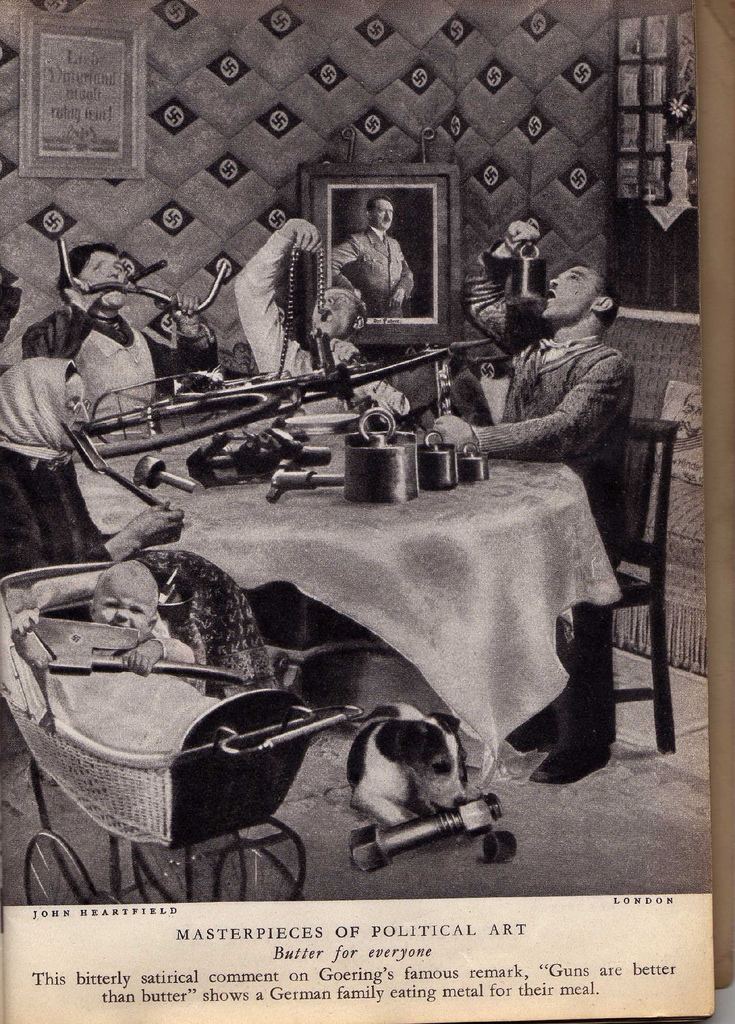 | ||
Books Art is in Danger!, Make Your Small Business Website Work: Easy Answers to Content, Navigation, and Design Similar People Hannah Hoch, Wieland Herzfelde, Paul Citroen, Jan Tschichold, Karel Teige | ||
John heartfield born yesterday
John Heartfield (born Helmut Herzfeld; 19 June 1891 – 26 April 1968) was an artist and a pioneer in the use of art as a political weapon. Some of his photomontages were anti-Nazi and anti-fascist statements. Heartfield also created book jackets for authors such as Upton Sinclair, as well as stage sets for such playwrights as Bertolt Brecht and Erwin Piscator.
Contents
- John heartfield born yesterday
- Ovation TV Heartfield
- Early life
- First World War
- 1919 39
- Postwar period
- Works
- Homages in modern culture
- References

Ovation TV | Heartfield
Early life
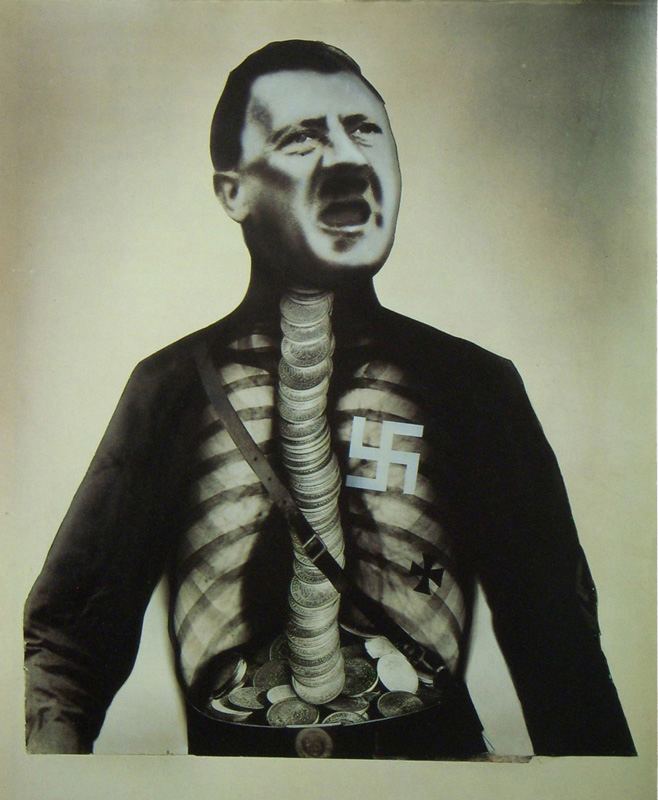
John Heartfield (Helmut Herzfeld) was born on 19 June 1891 in Berlin-Schmargendorf. His father was Franz Herzfeld, a socialist writer, and his mother was Alice (née Stolzenburg), a textile worker and political activist.

In 1899, Helmut, his brother Wieland Herzfelde, and his sisters Lotte and Hertha were abandoned in the woods by their parents. For a while, the four children resided with an uncle in the small town of Aigens.
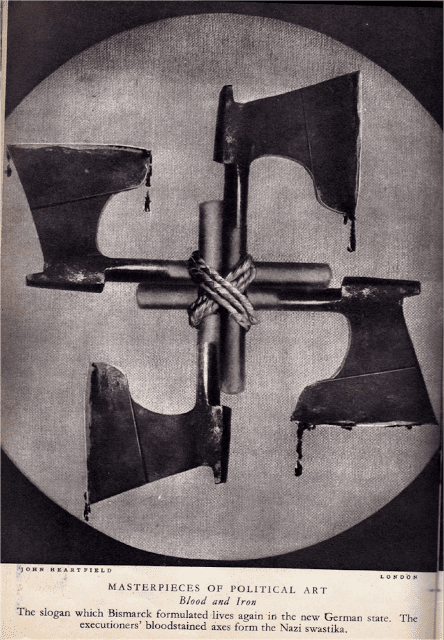
Heartfield, his brother and George Grosz launched the publishing house Malik-Verlag in 1917.

In 1908, Heartfield studied art in Munich at the Royal Bavarian Arts and Crafts School. Two commercial designers, Albert Weisgerber and Ludwig Hohlwein, were early influences.
First World War
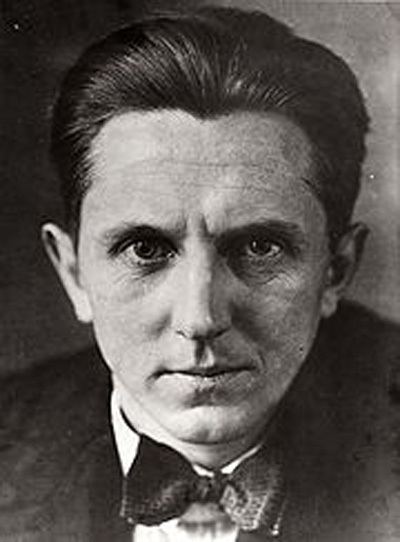
On the back of a photograph which was taken in 1912, his name is written as "Helmut." While living in Berlin, in 1917, he anglicised his name from "Helmut Herzfeld" to "John Heartfield," an English name to protest against the anti-British fervour sweeping Germany. In 1916, crowds in the street were shouting, "Gott strafe England!" ("May God punish England!").
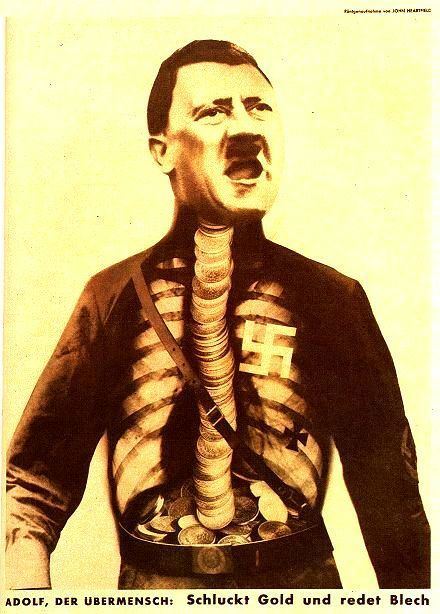
In 1916, John Heartfield and George Grosz experimented with pasting pictures together, a form of art later named photomontage.
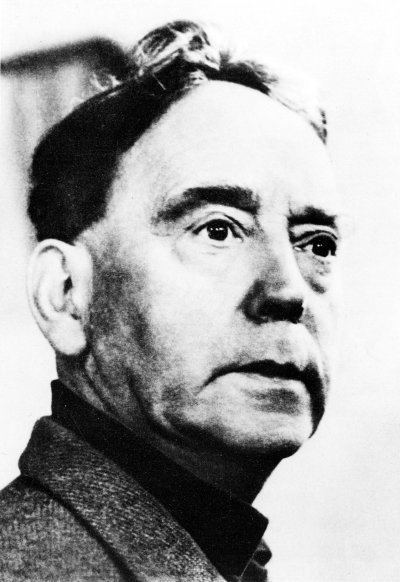
In January, 1918, Heartfield joined the newly founded German Communist Party (KPD).
In 1917, Heartfield became a member of Berlin Club Dada. Heartfield later became active in the Dada movement, helping to organise the Erste Internationale Dada-Messe (First International Dada Fair) in Berlin in 1920. Dadaists were the young lions of the German art scene, provocateurs who disrupted public art gatherings and ridiculed the participants. They labeled traditional art trivial and bourgeois. Heartfield was a member of a circle of German titans that included Erwin Piscator, Bertolt Brecht, Hannah Höch, and a host of others.
Heartfield built theatre sets for Erwin Piscator and Bertolt Brecht. Using Heartfield's minimal props and stark stages, Brecht interrupted his plays at key junctures to have the audience to be part of the action and not to lose themselves in it.
1919-39
In 1919, Heartfield was dismissed from the Reichswehr film service because of his support for the strike that followed the assassination of Karl Liebknecht and Rosa Luxemburg. With George Grosz, he founded Die Pleite, a satirical magazine.
Heartfield met Bertolt Brecht in 1924.
Though he was a prolific producer of stage sets and book jackets, Heartfield's main form of expression was photomontage. Heartfield produced the first political photomontages. He mainly worked for two publications: the daily Die Rote Fahne and the weekly Arbeiter-Illustrierte-Zeitung (AIZ), the latter of which published the works for which Heartfield is best remembered.
In the Museum of Modern Art in New York hangs a George Grosz Montage entitled, "The Engineer Heartfield."
During the 1920s, Heartfield produced a great number of photomontages, many of which were reproduced as dust jackets for books such as his montage for Upton Sinclair's The Millennium.
Heartfield lived in Berlin until April 1933, when the National Socialists took power. On Good Friday, the SS broke into his apartment, and the 5'2" Heartfield escaped by jumping from his balcony and hiding in a trash bin. He left Germany by walking over the Sudeten Mountains to Czechoslovakia.
In Czechoslovakia, John Heartfield rose to number-five on the Gestapo's most-wanted list.
In 1934 he montaged four bloody axes tied together to form a swastika to mock the "Blood and Iron" motto of the Reich (AIZ, Prague, March 8, 1934).
In 1938, he was forced once again to flee from the Nazis, this time to England, given the imminent German occupation of Czechoslovakia. He was interned for a time in England as an enemy alien, and his health began to deteriorate. Afterwards, he lived in Hampstead, London. His brother Wieland was refused a British residency permit in 1939 and, with his family, left for the United States.
Postwar period
After World War II, Heartfield was denied his written applications to remain in England for "his work and his health."
In 1950, Heartfield's brother Weiland convinced Heartfield to join him in East Berlin, East Germany. Heartfield moved into an apartment next to brother at 129A Friedrichstrasse. However, his return to East Berlin was treated with suspicion by the East German Government due to the length of his stay (6 years) in England and the fact his dentist was under suspicion by the Stasi (East German Secret Police). He was interrogated. The English translation of the interrogation appears in David King's final book: John Heartfield, Laughter Is A Devastating Weapon. In the end, Heartfield narrowly avoided a trial for treason.
He was denied admission into the East German Akademie der Künste (Academy of the Arts) for six years. He was unable to work as an artist and was denied health benefits.
Due to the intervention of Bertolt Brecht and Stefan Heym, Heartfield was formally admitted to the Academy of the Arts in 1956. Although he subsequently produced some montages warning of the threat of nuclear war, he was never again as prolific as in his youth.
In East Berlin, Heartfield worked closely with theatre directors such as Benno Besson and Wolfgang Langhoff at Berliner Ensemble and Deutsches Theater. He created innovative stage set designs for Bertolt Brecht and David Berg.
In 1967, he visited Britain and began preparing a retrospective exhibition of his work, "photomontages", which was subsequently completed by his widow Gertrud and the Academy of Arts, Berlin, and shown at the ICA in London in 1969.
John Heartfield died on April 26, 1968 in East Berlin, German Democratic Republic. He was buried close to Brecht's former home.
In 2005, the Tate Gallery, Britain held an exhibition of his photomontage pieces.
After his third wife Gertrud Heartfield's death, the East German Academy of the Arts took possession of all of Heartfield's surviving works. When the West German Academy of the Arts absorbed the East German Academy, the Heartfield Archive was transferred with it.
From April 15 to July 6, 1993, the second floor of the Museum of Modern Art, MOMA, in New York City was the American venue for an exhibition of Heartfield's original montages. The show was reviewed in The New York Times.
Works
He is best known for the 240 political art photomontages he created from 1930 to 1938 to expose fascism and The Third Reich. These famous works of political photomontage were an astounding cohesive critique of the rise of fascism.
Heartfield's artistic output was prolific. His 240 political montages appeared as covers for the Arbeiter Illustrierte Zeitung (AIZ, Workers' Illustrated Newspaper) from 1930 to 1938, a popular weekly whose circulation (as large as 500,000 copies at its height) rivaled any magazine in Germany during the nineteen thirties. Heartfield's anti-nazi photomontages were featured monthly on the AIZ cover, an important point, because most copies of the AIZ were sold at newsstands. His anti-fascist art mocked Hitler, fascism, and The Third Reich on major street corners throughout Berlin where Heartfield lived until he barely escaped assassination by the SS in April, 1933.
It was through rotogravure, an engraving process whereby pictures, designs, and words are engraved into the printing plate or printing cylinder—that Heartfield's montages, in the form of posters, were distributed in the streets of Berlin in 1932 and 1933.
His photomontages satirising Adolf Hitler and the Nazis often subverted Nazi symbols such as the swastika in order to undermine their propaganda message.
Homages in modern culture
Hurray, There's No Butter Left!, served as the inspiration behind the song "Metal Postcard" by Siouxsie and the Banshees. This song was re-recorded in German as "Mittageisen" and released as a single in September 1979 in Germany with Heartfield's work as the cover art. A few months later the single was also released in the UK. The Swiss darkwave band Mittageisen (1981–1986) named themselves after this song's title.
Slovenian and former Yugoslav avant-garde music group Laibach has a number of references to Heartfield's works: the original band's logo, the 'black cross', is really referencing Heartfield's art Der alte Wahlspruch im "neuen" Reich: Blut und Eisen (1934), a cross made of four axes, as can be seen on the inner sleeves and labels of their (vinyl) album Opus Dei (Mute, 1987, London). The cover art of their first self-titled album Laibach (Ropot, 1985, Ljubljana), is an evident reference to Heartfield's work Wie im Mittelalter… so im Dritten Reich (1934). In addition to that, there is a track called Raus! (Herzfelde), originally on Slovenska Akropola (Ropot, 1986, Ljubljana), but also included in Krst pod Triglavom and in the Opus Dei cd as Herzfeld (Heartfield).
The band Blurt recorded a song called "Hurray, the Butter is All Gone!" on their 1986 album "Poppycock".
The British hardcore punk band Discharge used Heartfield's work "Peace and Fascism" for the cover artwork of their compilation "Never Again".
Armenian American band System of a Down used Heartfield's poster for the Communist Party of Germany (The Hand Has Five Fingers) as cover art for their self-titled debut album.
